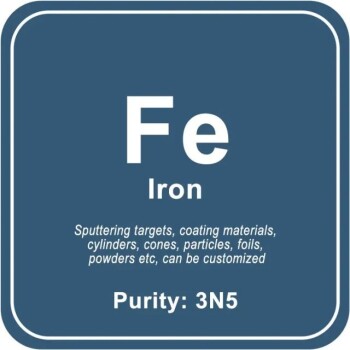To identify an element, various analytical techniques and instruments are employed in laboratories.
Each technique has its own principles and applications.
These methods include ultraviolet spectrophotometry (UV), atomic absorption spectrophotometry (AAS), atomic fluorescence spectrophotometry (AFS), atomic emission spectrophotometry (AES), inductively coupled plasma mass spectrometry (ICP-MS), and X-ray fluorescence spectrometry (XRF).
Each technique offers unique features and is suitable for different types of analyses.
These analyses range from qualitative to quantitative.
They also cover simple to complex sample compositions.
5 Key Techniques Explained

1. Ultraviolet/Visible Spectrophotometer (UV)
Principle: Utilizes Beer's law to measure the absorbance of light by a sample, which is proportional to its concentration.
Features: High sensitivity, good selectivity, high accuracy, wide applicable concentration range, and low analysis cost.
2. Atomic Absorption and Fluorescence Spectrophotometer
Atomic Absorption Spectroscopy (AAS): Based on the absorption of light by gaseous atoms, leading to transitions of outer electrons from the ground state to the excited state.
Atomic Fluorescence Spectroscopy (AFS): Measures the intensity of fluorescence emitted by atoms under radiation stimulation.
Features of AAS: High sensitivity, good selectivity, simple operation, and good measurement precision.
Features of AFS: Low detection limit, less interference, simple instrument structure, and wide linear range.
3. Atomic Emission Spectrophotometer (AES)
Principle: Involves the emission of light by atoms when electrons return to the ground state from the excited state.
Features: High temperature, good detection limit, stability, and wide linear range.
4. Inductively Coupled Plasma Mass Spectrometry (ICP-MS)
Principle: Ionizes sample components to generate ions with different charge-to-mass ratios, analyzed by a mass spectrometer.
Features: Wide mass measurement range, high resolution, and high absolute sensitivity.
5. X-ray Fluorescence Spectrophotometer (XRF)
Principle: Excites elements in a sample to emit secondary X-rays, which are characteristic of the elements' energy or wavelength.
Features: Non-destructive testing, multi-element detection, and applicability in material science and geology.
Silicon Drift Detectors (SDD) in XRF
Function: Ionizes when exposed to X-rays, generating charge proportional to the element amount in the sample.
Selection Criteria: SDDs offer better resolution and are less susceptible to temperature changes, making them suitable for complex samples and low detection limits.
Applications of XRF
Material Science and Geology: Provides accurate element content data and rapid elemental composition analysis of rocks and ores.
Alloy Grade Identification: Capable of identifying over 1,000 common alloys and analyzing precious metals with varying analysis times for different accuracies.
These techniques collectively enable comprehensive analysis of elements in various sample types.
They support research and development across multiple scientific and industrial fields.
Continue Exploring, Consult Our Experts
Discover how KINTEK SOLUTION's cutting-edge analytical instruments can revolutionize your lab's capabilities.
With a range of specialized techniques from UV spectrophotometers to ICP-MS, our advanced equipment delivers high sensitivity, accuracy, and speed.
Unlock the potential of your samples today—contact KINTEK SOLUTION to explore how our solutions can elevate your analytical workflows.
Act now and experience the difference of precision and performance.















